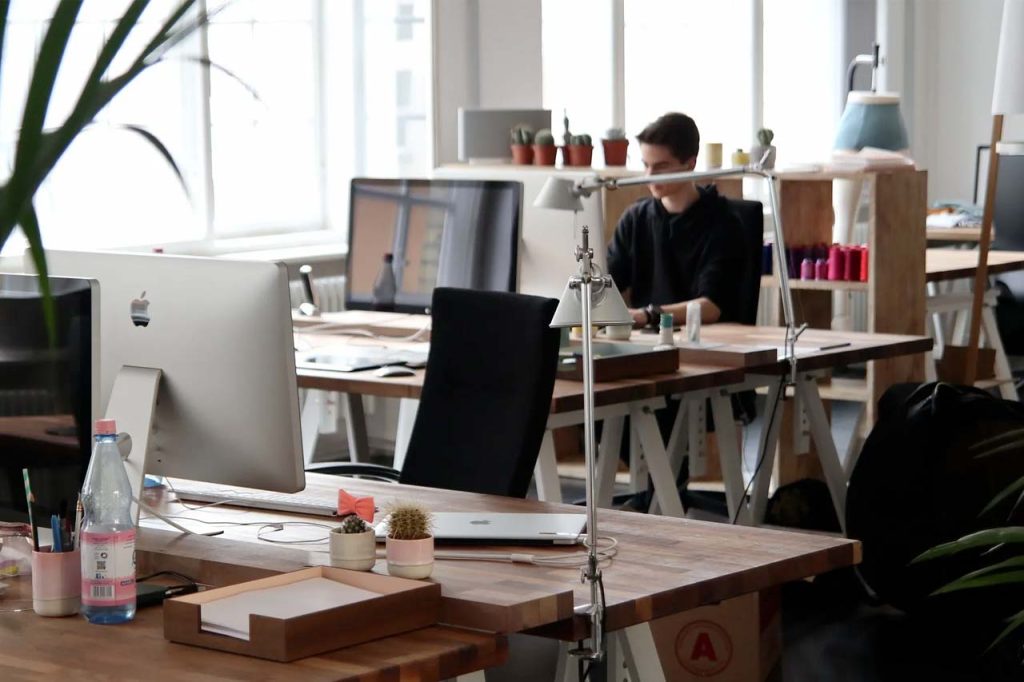Blog
Health and safety for office workers | Practical steps for employers

It’s quite common for employers in office-based businesses to have a relaxed attitude to health and safety.
You might assume that if there are no obvious high-risk hazards, such as ladders to fall off or machines to get limbs caught in, then there’s nothing to worry about.
In reality, however, office safety is a very important concern to be aware of and there are very real workplace health and safety risks associated with an office environment. Not only that, but health and safety legislation is broader than you may think. Did you know, for example, that it covers the risk of work-related violence, bullying and harassment?*
Do you need support?
Speak to us for an honest, no obligation chat on:
0345 226 8393 Lines are open 9am – 5pm
Why employers should take office safety seriously
The cost of non-compliance in office safety is rising, with increasingly tough penalties handed out to employers across all sectors for breaches of health and safety law.
In fact, according to the HSE’s latest enforcement statistics:
- Fines for health and safety breaches totalled £72.6 million in 2017/18;
- The average penalty per case that resulted in conviction was around £147,000 (an increase of approximately 16% on the year before); and
- The single largest fine handed out was £3 million, and there were 45 cases in which fines exceeded £500,000 (in 2014/15, the last year before tougher sentencing guidelines were introduced, the single largest fine was £750,000 and there were just five cases where the fine imposed was £500,000 or more).
With six-figure fines the new norm, it is vital that employers take a proactive approach to health and safety management and put appropriate procedures in place to reduce risk. Indeed, even if businesses are able to absorb such significant financial blows, the reputational damage can be irreparable.
Health and safety law applies to all organisations, so while you might not immediately think of health and safety as an obvious concern for office-based professional services businesses, a serious incident could have a profoundly negative effect on annual profitability, among other metrics. Hidden costs of health and safety failings also include employee absence, which may result in a loss of business, continuity or reputation.

What are employers’ duties?
Under the Health and Safety at Work etc Act 1974, employers have a legal duty to protect the health, safety and welfare of their employees. This duty also extends to others who may be affected by their activities, including temporary/casual workers, self-employed workers, contractors, clients, visitors and members of the public.
All employers – whatever their business and whatever the level of risk – must:
Design, provide and maintain workplaces that are safe and without risks to health.
Provide workers with adequate and relevant information, instruction and training in regards to office safety.
Provide adequate first aid facilities.
Develop suitable emergency procedures, including evacuation of the workplace.
Ensure office temperature, ventilation, lighting, toilet, washing and rest facilities meet required health, safety and welfare standards.
Ensure appropriate work equipment is provided, properly used and regularly maintained.
Keep records of accidents and injuries and report these under RIDDOR where applicable.
What are the most common office safety hazards?
Even relatively safe environments, such as an office, present health and safety risks that need to be managed. Within an office environment, there are some common categories of hazards that people are likely to encounter.
Slips, trips and falls
According to the HSE, slips, trips and falls are the single most common cause of major injury in UK workplaces and are responsible for 33% of non-fatal work-related accidents.
Slips occur when there is a lack of friction between a person’s feet and the floor they are standing or walking on. They are typically a result of:
- Spillages (water, tea, liquid food items, etc.) that aren’t properly cleaned up;
- Floors that are still wet after cleaning;
- Floors that are wet due to rain;
- Footwear that lacks proper grip; and
- Unsecured floor mats.
Trips happen when a person’s foot comes into contact with an object, causing them to stumble or fall. Some common trip hazards in an office environment include:
- Electrical cords/wires across paths where people walk;
- Open desk drawers/filing cabinets;
- Objects that are left lying around, such as people’s bags and deliveries; and
- Loose carpeting.
Falls are the result of a slip or trip. A ‘fall’ is also the term most commonly used where there is some element of height involved. Falls from height can cause severe injury and are the most common cause of workplace fatality in the UK, responsible for 40 of the 147 work-related deaths in 2018/19. In offices, falls typically occur when workers use unstable and unsuitable aids, such as chairs or wheeled drawers, in place of a ladder.
Display screen equipment
Office workers will spend most of their day seated at their desk using some form of display screen equipment or ‘DSE’. This covers PCs, laptops, tablets and smartphones.
While using DSE may appear to be a relatively harmless task, over time, a poorly-designed work station and/or bad work habits can result in serious health problems, including:
- Physical (musculoskeletal) problems – conditions affecting the joints, bones and muscles;
- Difficulties with vision – headaches, blurred vision and eye fatigue caused by straining the muscles in your eyes; and/or
- Mental stress – reduced memory recall, loss of concentration, dizziness.
Under the Health and Safety (Display Screen Equipment) Regulations, employers must take steps to protect DSE users/operators – those who use DSE daily for an hour or more at a time – from these related health and safety risks. In practical terms, this means:
- Carrying out a risk assessment of each user’s workstation;
- Putting controls in place to reduce any risks identified to as low a level as is reasonably practicable;
- Providing adequate information and training on these risks and how to avoid them to all staff working with DSE;
- Breaking up intensive periods of on-screen activity by encouraging employees to switch up their tasks;
- Providing free eye tests when requested, and where the test highlights the need for corrective eyewear for DSE use, funding the basic cost; and
- Providing anti-glare computer screens to protect workers’ eyes from unnatural light from reflecting off the screen, and installing blinds if natural light from outside is too bright.
Ongoing assessment and management of the risks associated with display screen equipment (DSE) is vital. A DSE risk assessment should be undertaken whenever a new workstation is set up, when a new user starts work, and whenever there is a significant change to personnel, working practices, office location, or the equipment itself. Risk assessments should also be repeated if there is reason to suspect that they may no longer be valid – for example, if a DSE user reports that they are experiencing pain or discomfort.

Manual Handling
Manual handling refers to any workplace activity that involves lifting, carrying, lowering or otherwise carrying or moving a load by hand or bodily force. According to the HSE, manual handling tasks are responsible for a third of all workplace injuries.
While more common in physical jobs, office workers will likely undertake some form of manual handling in the course of their role, such as when transporting heavy equipment, moving supplies from place to place, and taking in deliveries. It’s important that these tasks are properly managed, and that staff are trained in safe manual handling techniques, in order to reduce the risk of injury to a person’s back, neck or spine.
The HSE advises that, in the first instance, employers should try to avoid the need for employees to manually handle loads if there is a risk of them being injured. If manual handling cannot be avoided, then you must conduct a suitable and sufficient risk assessment and implement practical controls or safe systems of work to reduce the risks you have identified to as low a level as possible.
Practical ways to minimise risk include:
- Splitting heavy items into more manageable loads;
- Providing employees with precise information about the load’s weight, heaviest side and, if asymmetrical, the centre of gravity; and
- Making sure employees receive training on how to safely lift items and how to use any provided lifting equipment.
Any changes made to work to avoid or reduce manual handling must be monitored to ensure they are working satisfactorily. If not satisfactory, alternatives must be considered.
Other office safety hazards
There are many elements of an office environment that invite the risk of accidents. Some further health and safety hazards that must be managed include:
- Electrical equipment;
Falling objects (items falling off shelves, out of cupboards, off the wall or from the ceiling); - Poor ventilation, lighting or air quality;
Ill-maintained furniture; - Pinch injuries (getting fingers or hair caught in drawers and office machines); and
- Work-related stress.
Fortunately, most office injuries are easily prevented through simple practical measures and a proactive approach to health and safety.
Straightforward health and safety support
We understand that most owners of office-based businesses aren’t experts in office safety, and knowing where to begin, and whether you’re doing enough, can be daunting. That’s why professional services businesses across the UK trust us to manage their compliance.
As part of our fixed-fee service, we will have access to an experienced Health & Safety Consultant, who will work with you to identify sensible solutions to all office safety challenges. This is backed up by our award-winning Health & Safety Software to help you streamline tasks, monitor your risk status in real time, and provide paperless evidence of your compliance.
